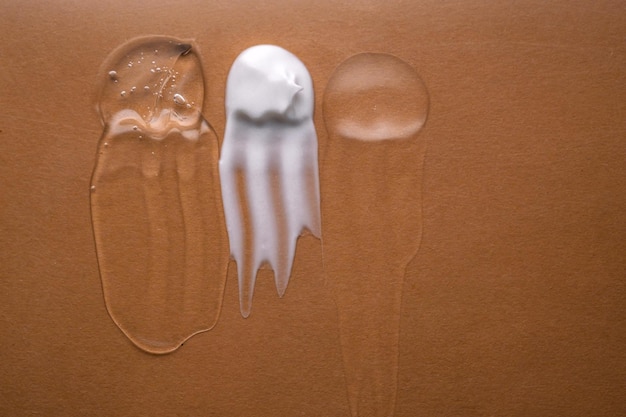Sunscreen Every Day: Your Updated 2025 Guide to UV Protection

Advertisements
Sunscreen Every Day: The Updated 2025 Guide to Protecting Your Skin from UV Damage details the crucial role of daily sunscreen use in preventing skin cancer, premature aging, and hyperpigmentation, while offering insights into selecting the right SPF, understanding different sunscreen types, and incorporating it seamlessly into your skincare routine for optimal protection.
Advertisements
Is wearing sunscreen every day really necessary? Absolutely! This Sunscreen Every Day: The Updated 2025 Guide to Protecting Your Skin from UV Damage dives into why daily sunscreen application is a non-negotiable step in your skincare routine, offering the latest insights and recommendations for keeping your skin healthy and radiant.
Why You Need Sunscreen Every Day, Rain or Shine
Advertisements
Many people believe sunscreen is only for beach days or sunny vacations. However, the truth is that harmful UV rays are present year-round, even on cloudy days. Understanding the science behind UV radiation and its effects on your skin is the first step in recognizing the importance of daily sun protection.
From preventing premature aging to significantly reducing the risk of skin cancer, the benefits of incorporating sunscreen into your daily routine are undeniable. Let’s explore why sunscreen is a daily essential, regardless of the weather.
Understanding UV Radiation
UV radiation comes in two primary forms that reach the Earth’s surface: UVA and UVB rays. Both can damage your skin, but they do so in different ways.
UVA rays penetrate deep into the skin, causing premature aging, wrinkles, and sunspots. UVB rays are responsible for sunburns and play a significant role in the development of skin cancer.
The Cumulative Effect of Sun Exposure
Even short periods of sun exposure without protection add up over time. This cumulative damage can lead to accelerated aging, hyperpigmentation, and an increased risk of skin cancer. Consistent, daily sunscreen use helps to mitigate these long-term effects.
- Prevents Premature Aging: Sunscreen protects against UVA rays, which break down collagen and elastin, leading to wrinkles and sagging skin.
- Reduces Risk of Skin Cancer: Regular sunscreen use significantly lowers your chances of developing skin cancer, including melanoma.
- Protects Against Hyperpigmentation: Sunscreen helps prevent and fade sunspots and other forms of hyperpigmentation caused by UV exposure.
- Maintains Skin Health: By shielding your skin from UV damage, sunscreen helps maintain its overall health and appearance.
Incorporating sunscreen into your daily routine is a simple yet powerful way to protect your skin from the harmful effects of UV radiation. Whether it’s sunny, cloudy, or rainy, make sunscreen a non-negotiable part of your skincare regimen.
Choosing the Right Sunscreen: SPF and Types Explained
With so many sunscreens on the market, selecting the right one can feel overwhelming. Understanding SPF levels, different sunscreen types (mineral vs. chemical), and your skin type are key factors in making an informed choice. This section will guide you through the selection process to find the perfect sunscreen for your needs.
Finding a sunscreen that effectively protects your skin while feeling comfortable to wear is essential for consistent use. Let’s delve into the details of SPF and sunscreen types to help you make the best decision.

Understanding SPF Levels
SPF (Sun Protection Factor) measures how well a sunscreen protects against UVB rays. However, it’s important to understand what those numbers actually mean.
SPF 30 blocks about 97% of UVB rays, while SPF 50 blocks about 98%. While SPF 50 offers slightly more protection, the difference is minimal. The key is to apply sunscreen generously and reapply every two hours, or more frequently if swimming or sweating.
Mineral vs. Chemical Sunscreens
Mineral sunscreens contain zinc oxide and/or titanium dioxide, which create a physical barrier on the skin to block UV rays. They are generally considered safer for sensitive skin and the environment.
Chemical sunscreens contain chemical filters that absorb UV radiation and release heat. They tend to be lighter and easier to blend into the skin, but some people may find them irritating.
- Mineral Sunscreens: Ideal for sensitive skin, environmentally friendly, and provide broad-spectrum protection.
- Chemical Sunscreens: Lightweight, easy to apply, and often more cosmetically elegant.
- Broad-Spectrum Protection: Look for sunscreens that protect against both UVA and UVB rays.
- Water Resistance: Choose water-resistant sunscreens if you’ll be swimming or sweating.
Choosing the right sunscreen involves considering SPF levels, sunscreen types, and your skin’s unique needs. By understanding these factors, you can select a sunscreen that effectively protects your skin and feels comfortable to wear daily.
How to Properly Apply Sunscreen for Maximum Protection
Even the best sunscreen won’t work if it’s not applied correctly. Proper application is crucial for achieving the level of protection indicated on the label. This section provides a step-by-step guide to ensure you’re getting the most out of your sunscreen.
From the amount of sunscreen to use to the areas you might be missing, mastering the art of sunscreen application is essential for optimal UV protection. Let’s dive into the details.
The Right Amount of Sunscreen
Most people don’t apply enough sunscreen. For your body, you should use about one ounce (a shot glass full) to cover all exposed skin. For your face, aim for about half a teaspoon.
Don’t forget to apply sunscreen to often-missed areas like your ears, the back of your neck, and the tops of your feet.
Application Techniques and Timing
Apply sunscreen 15-30 minutes before sun exposure to allow it to bind to your skin. This is especially important for chemical sunscreens, which need time to be absorbed.
Reapply sunscreen every two hours, or more frequently if swimming or sweating. Even water-resistant sunscreens lose their effectiveness after a certain amount of time in the water.
- Apply Generously: Use the recommended amount to ensure adequate coverage.
- Don’t Forget Key Areas: Pay attention to often-missed spots like ears, neck, and feet.
- Apply in Advance: Give sunscreen time to bind to your skin before sun exposure.
- Reapply Regularly: Reapply every two hours, or more often if swimming or sweating.
Properly applying sunscreen is just as important as choosing the right sunscreen. By following these guidelines, you can ensure you’re getting the maximum protection from UV damage.
Sunscreen and Your Daily Skincare Routine: A Seamless Integration
Incorporating sunscreen into your daily skincare routine doesn’t have to be a chore. With the right techniques and product pairings, you can seamlessly integrate sunscreen into your existing regimen. This section offers practical tips for making sunscreen a natural part of your daily routine.
From layering sunscreen with other skincare products to finding formulas that work well under makeup, integrating sunscreen into your routine can be simple and effective. Let’s explore how.
Layering Sunscreen with Other Products
Apply sunscreen as the last step in your skincare routine, after moisturizer and before makeup. This ensures that the sunscreen can effectively create a protective barrier on your skin.
Allow your moisturizer to fully absorb before applying sunscreen to prevent diluting the sunscreen’s effectiveness.
Sunscreen and Makeup Compatibility
Many sunscreens are designed to work well under makeup. Look for lightweight, non-greasy formulas that won’t cause your makeup to pill or smudge.
Consider using a tinted sunscreen or a BB cream with SPF to streamline your routine and provide a touch of coverage.

- Apply Last: Sunscreen should be the final step in your skincare routine.
- Choose Lightweight Formulas: Opt for sunscreens that work well under makeup.
- Consider Tinted Sunscreen: A tinted formula can simplify your routine.
- Reapply Over Makeup: Use a sunscreen spray or powder for easy reapplication over makeup.
Integrating sunscreen into your daily skincare routine is easy with the right products and techniques. By making it a seamless part of your regimen, you can ensure consistent protection from UV damage.
Sunscreen for All Skin Types: Addressing Specific Concerns
Whether you have oily, dry, sensitive, or acne-prone skin, there’s a sunscreen out there for you. Understanding your skin type and its unique needs is crucial in selecting a sunscreen that won’t cause irritation or breakouts. This section offers tailored recommendations for various skin types.
From non-comedogenic formulas to hydrating options, finding a sunscreen that addresses your specific concerns is essential for comfortable and effective daily use. Let’s explore the best choices for different skin types.
Sunscreen for Oily and Acne-Prone Skin
Look for non-comedogenic sunscreens that won’t clog pores. Gel or lightweight fluid formulas are often a good choice.
Consider sunscreens that contain ingredients like niacinamide, which can help regulate oil production and reduce inflammation.
Sunscreen for Dry and Sensitive Skin
Choose hydrating sunscreens that contain moisturizing ingredients like hyaluronic acid or ceramides. Mineral sunscreens are often a good option for sensitive skin.
Avoid sunscreens with fragrances, alcohol, or other potential irritants.
Sunscreen for Darker Skin Tones
Mineral sunscreens can sometimes leave a white cast on darker skin tones. Look for tinted mineral sunscreens or chemical sunscreens that blend in more easily.
Remember that everyone, regardless of skin tone, is susceptible to UV damage and should wear sunscreen daily.
- Oily Skin: Choose non-comedogenic, lightweight formulas.
- Dry Skin: Opt for hydrating sunscreens with moisturizing ingredients.
- Sensitive Skin: Mineral sunscreens are often the best choice.
- Darker Skin Tones: Look for tinted or easily blendable formulas.
Selecting a sunscreen that caters to your specific skin type is crucial for ensuring comfortable and effective daily use. By addressing your unique concerns, you can find a sunscreen that you’ll love to wear every day.
Beyond Sunscreen: Additional Sun Protection Strategies
While sunscreen is a vital part of sun protection, it’s not the only tool in your arsenal. Combining sunscreen with other protective measures can significantly reduce your risk of UV damage. This section explores additional strategies for staying safe in the sun.
From protective clothing to seeking shade, incorporating these strategies into your daily life can enhance your sun protection efforts and keep your skin healthy. Let’s explore these additional measures.
Protective Clothing and Accessories
Wear wide-brimmed hats, sunglasses, and long sleeves when possible to shield your skin from the sun. Dark-colored clothing tends to offer more protection than light-colored clothing.
Look for clothing with an Ultraviolet Protection Factor (UPF) rating for added protection.
Seeking Shade During Peak Hours
The sun’s rays are strongest between 10 a.m. and 4 p.m. Seek shade during these peak hours to minimize your exposure to UV radiation.
Use umbrellas, trees, or other shaded areas to protect your skin when you’re outdoors.
- Wear Protective Clothing: Hats, sunglasses, and long sleeves can provide extra protection.
- Seek Shade: Minimize sun exposure during peak hours.
- Be Mindful of Your Environment: UV rays can reflect off water, sand, and snow.
- Check the UV Index: Use the UV index to plan your outdoor activities and adjust your sun protection measures accordingly.
Sunscreen is a crucial part of sun protection, but it’s most effective when combined with other strategies like protective clothing and seeking shade. By incorporating these additional measures into your daily life, you can significantly reduce your risk of UV damage and keep your skin healthy.
| Key Point | Brief Description |
|---|---|
| ☀️ Daily Use | Apply sunscreen every day, rain or shine, to protect against UV radiation. |
| 🧴 Choose Wisely | Select broad-spectrum sunscreen with SPF 30 or higher that suits your skin type. |
| ⏰ Proper Application | Apply generously 15-30 minutes before sun exposure and reapply every two hours. |
| 🛡️ Extra Protection | Combine sunscreen with protective clothing and shade for comprehensive sun protection. |
Frequently Asked Questions
▼
Yes! UV rays are present year-round and can damage your skin even on cloudy days. Daily sunscreen use protects against premature aging and reduces the risk of skin cancer.
▼
The American Academy of Dermatology recommends using a broad-spectrum sunscreen with an SPF of 30 or higher. This level of SPF blocks 97% of UVB rays, offering significant protection.
▼
For your body, use about one ounce (a shot glass full). For your face, aim for about half a teaspoon. Ensure all exposed skin is covered, including often-missed areas like ears and neck.
▼
Reapply sunscreen every two hours, or more frequently if swimming or sweating. Even water-resistant sunscreens lose their effectiveness after a certain amount of time.
▼
While you can, it’s often best to use a sunscreen specifically formulated for your face. Facial sunscreens tend to be lighter, non-comedogenic, and may contain beneficial skincare ingredients.
Conclusion
Incorporating daily sunscreen use into your skincare routine is one of the most effective ways to protect your skin from UV damage. By understanding the importance of sunscreen, choosing the right product, and applying it correctly, you can maintain healthy, radiant skin for years to come.





